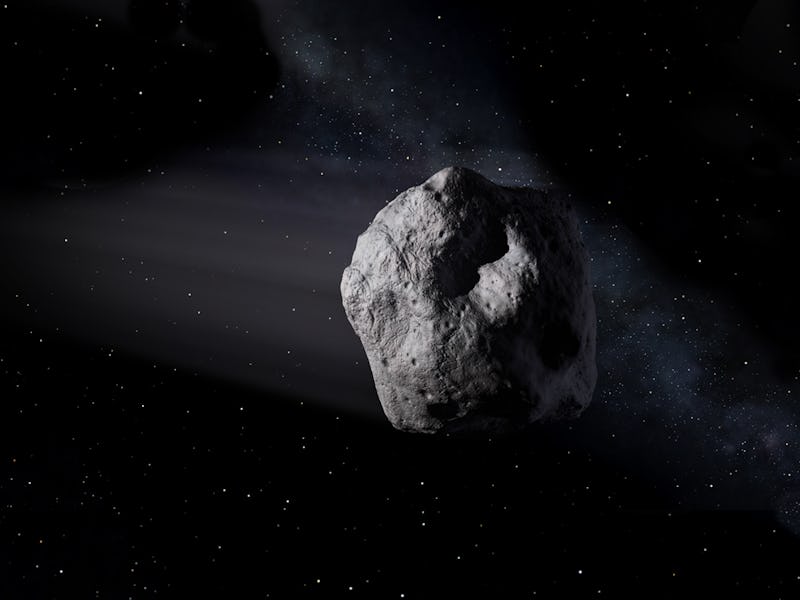In a real-life Armageddon scenario, NASA has teamed up with the Federal Emergency Management Agency (FEMA) to put procedures into place that will protect us if an asteroid ever heads our way.
With the help of a network of observatories (both terrestrial and space-based), NASA is keeping tabs on the local asteroid population — which is estimated to be around 10,000 — and as a result it’s common to hear stories of close encounters as these hunks of rocks whiz by our planet. At least 10 percent of the known near-Earth objects (NEOs) are 3,300 feet in diameter, which could cause global devastation.
So, what happens if one of these asteroids (or perhaps one we haven’t seen yet) is on a direct path to Earth? How will we prepare?
Imagine we discover one such asteroid, destined to impact Earth in four years. We won’t be able to call up Harry Stamper and his crew to come save the day, but by being vigilant now, we will have plans in place to help minimize the damage.
On October 25, NASA and FEMA held a meeting to discuss how they would handle such an event. As part of an ongoing simulation, the two agencies tested how to properly evaluate potential threats, prevent panic and protect the public.
“These exercises are invaluable for those of us in the asteroid science community responsible for engaging with FEMA on this natural hazard,” Lindley Johnson, NASA’s Planetary Defense Officer, said in a news release. “We receive valuable feedback from emergency managers at these exercises about what information is critical for their decision making, and we take that into account when we exercise how we would provide information to FEMA about a predicted impact.”
Several agencies gathered together in El Segundo, California on October 25 for a tabletop exercise simulating a potential asteroid impact in 2020.
The exercise — held in El Segundo, California — was the third such exercise with representatives from NASA”s Jet Propulsion Laboratory (JPL), the Department of Energy’s national laboratories, the Air Force and the California Governor’s Office of Emergency Services taking part.
The first two meetings focused on planning for a potential deflection meeting, while the most recent meeting focused on how the agencies would handle a scenario where there was not enough time to plan for such a mission.
“It is critical to exercise these kinds of low-probability but high-consequence disaster scenarios,” FEMA Administrator Craig Fugate said in the statement. “By working through our emergency response plans now, we will be better prepared if and when we need to respond to such an event.”
At the start of the simulation, the group was tracking an impending asteroid — measuring between 300 and 800 feet in length — which had about a 2 percent chance of impacting the Earth in 2020. As the simulation went on (and fictional months went by), the asteroid’s trajectory shifted, bringing the chance of impact up to 65 percent, and ultimately up to 100 percent by May 2017. A few months later, the teams were able to pinpoint the impact zone in Southern California.
While tracking the fictitious asteroid, scientists were able to calculate how much of the population and infrastructure would be affected by the impact. By analyzing the data collected from these exercises, the agencies can develop plans to develop evacuation processes, and how best to inform the public over the course of the asteroid’s approach.
“The high degree of initial uncertainty, coupled with the relatively long impact warning time, made this scenario unique and especially challenging for emergency managers,” Leviticus A. Lewis, chief of FEMA’s National Response Coordination Branch, said in the statement. “It’s quite different from preparing for an event with a much shorter timeline, such as a hurricane.”
In January, NASA established the Planetary Defense Coordination Office, which oversees how NASA tracks NEOs, and handles the communication efforts between agencies to develop the best way to handle the threat of potential impacts.
“These exercises are invaluable for those of us in the asteroid science community responsible for engaging with FEMA on this natural hazard,” NASA Planetary Defense Officer Lindley Johnson said in the statement. “We receive valuable feedback from emergency managers at these exercises about what information is critical for their decision making, and we take that into account when we exercise how we would provide information to FEMA about a predicted impact.”
